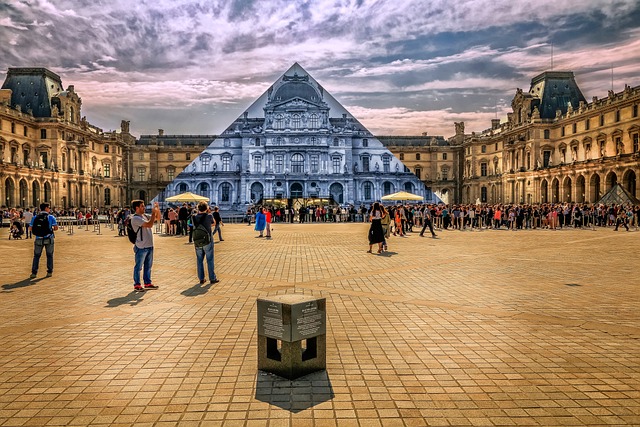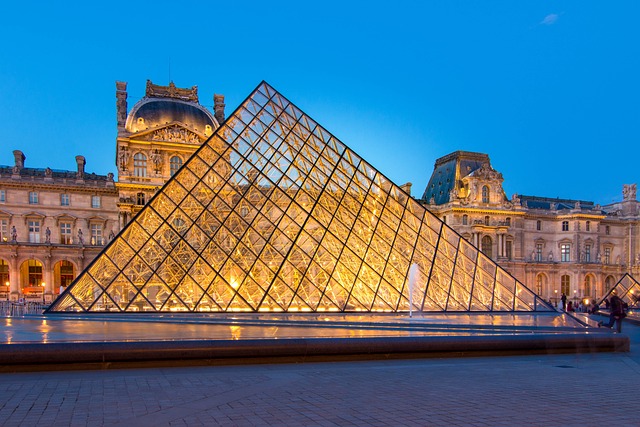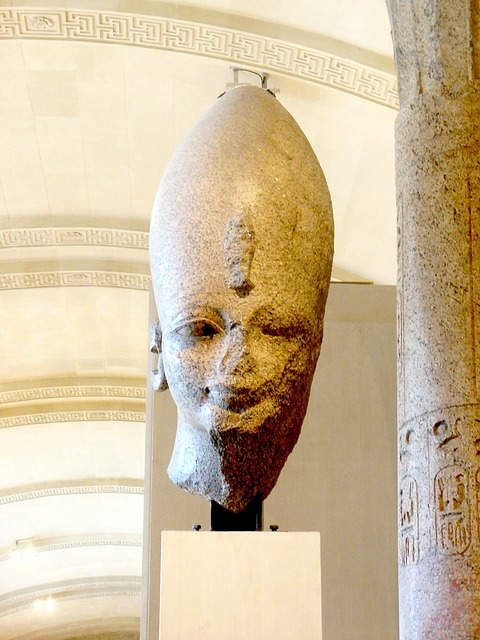Captivating Curiosities: The Lesser-Known Gems of the Louvre
The Louvre, universally acclaimed as one of the finest and largest art museums in the world, is a treasure trove of artistic masterpieces and historical artifacts. While iconic masterpieces like the Mona Lisa and the Venus de Milo often steal the limelight, hidden within the museum’s expansive walls lies a trove of less-celebrated but equally fascinating works of art. This article aims to unearth some of the Louvre’s lesser-known gems, showcasing their unique stories and significance that contribute to the rich tapestry of cultural history housed within the museum.
The Louvre: A Brief Overview
Established in 1793 during the French Revolution, the Louvre originated as a royal palace before its transformation into a public museum. Spanning over 72,000 square meters of exhibition space, it holds an impressive collection of over 380,000 objects. With its glass pyramid entrance and the historic palace structure, the Louvre is an architectural marvel both inside and out.
As visitors step into this world-renowned institution, they may find themselves enchanted by the grandeur of its halls, but, amid the sea of art, many hidden gems await discovery. Exploring these lesser-known treasures not only enhances one’s visit but also sheds light on the diverse narratives woven throughout art history.
Artistic Wonders Off the Beaten Path
When planning a visit to the Louvre, it is easy to get swept away by the allure of high-profile artworks. Yet, some artworks quietly beckon to be appreciated without the throngs of tourists. Here are a few captivating curiosities that deserve a place in the spotlight.
The Virgin of the Rocks by Leonardo da Vinci
Leonardo da Vinci is celebrated for his groundbreaking contributions to Renaissance art, and while his ‘Mona Lisa’ draws millions, the hauntingly serene ‘Virgin of the Rocks’ offers a different kind of enchantment. Composed of two versions, the Louvre houses the second version, created between 1483 and 1486.
This painting features the Virgin Mary, the Christ Child, and John the Baptist in a rocky landscape. The ethereal quality of the figures and the intricate details of the natural environment mesmerizingly pull viewers into its depth. The juxtaposition of light and shadow showcases da Vinci’s mastery of chiaroscuro. The many symbolic elements, such as the gesture of The Virgin and the positioning of the figures, invite interpretations that add layers to the viewers’ comprehension of divine narratives and human emotion.
Portrait of a Man with a Blue Chaperon by an Unknown Artist
This intriguing painting is often overshadowed by renowned portraits, yet it captivates visitors with its mystique. The identity of the subject remains elusive, as do the reasons for their fairly medieval attire adorned with a striking blue chaperon. The choice of colors and textures adds an air of almost theatrical drama to the piece.
The fine details in the fabric and the compact composition draw one to focus on the subject’s contemplative expression, raising questions about their story. Unknown paintings like this often encourage the audience to engage their imagination, revealing much about the social and cultural context of the time in which they were created.
The Seated Scribe
Among the artifacts from ancient Egypt, the ‘Seated Scribe’ stands out, drawing visitors into the intrigue of a past civilization. Dating back to approximately 2620-2500 BC during the Fourth Dynasty of the Old Kingdom, this lifelike sculpture embodies the profound respect afforded to literacy and scholarship in ancient Egypt.
Portraying a seated man, the scribe’s attentive posture and keen expression symbolize readiness and intelligence. As a work of art, the ‘Seated Scribe’ emphasizes the importance of the written word and the role of scribes in preserving history. For centuries, this sculpture has captivated those who resonate with the themes of knowledge and enlightenment.
The Gallery of Venus
While many flock to see the Venus de Milo, few take the time to appreciate the collection surrounding it in the Gallery of Venus. This exquisite gallery is adorned with an array of classical sculptures that celebrate the theme of beauty and femininity through the ages. Visitors who take a moment to analyze these captivating works will discover a dialogue among the pieces, exploring various interpretations of the female form.
Among these sculptures, ‘The Winged Victory of Samothrace’ stands as another marvel, depicting Nike, the goddess of victory. The dramatic portrayal of movement and emotion captured in marble invites admiration and contemplation, breathing life into the otherwise cold medium. Together, these works mesh to tell a forgotten narrative of femininity that extends beyond the borders of individual pieces.
Cultural Relics and Artifacts
Beyond painting and sculpture, the Louvre’s collections also showcase a myriad of objects that represent different cultures and eras. These societal artifacts glean insights into the lifestyles and beliefs of civilizations long past.
The Code of Hammurabi
One of the most significant artifacts in the Louvre is the Code of Hammurabi, inscribed on a basalt stele dating back to 1754 BC. This ancient law code signifies one of the earliest documented set of laws and governs the interactions within the Babylonian society. The stone is adorned with a relief portraying Hammurabi receiving the laws from the sun god Shamash.
Visitors interested in the genesis of justice and governance will find profound meaning in this historical relic, as it sparks discussions around legality, order, and ethics that resonate even today. This artifact emphasizes the correlations between ancient and contemporary societies, demonstrating how legal structures have evolved through time.
Napoleon’s Apartments
Often overlooked during a visit, the ornate Napoleon Apartments transport visitors into a world of lavishness and splendor. Decorated in the Empire style, these rooms reflect the opulence desired by one of history’s most infamous leaders. Each room offers an intimate glimpse into the life of Napoleon, including exquisite furnishings, golden accents, and majestic mirrors.
By stepping into these rooms, one can better grasp the tastes, ambitions, and aspirations of the era. Napoleon’s unique blend of power and artistry resonates throughout these apartments, telling stories of ambition amid the backdrop of a burgeoning empire.
Experiencing the Lesser-Known at the Louvre
To fully appreciate the captivating curiosities of the Louvre, visitors should immerse themselves in exploring beyond the renowned masterpieces. Taking time to wander through the lesser-trodden halls, asking thought-provoking questions, and contemplating the significance of the overlooked treasures can lead to a more profound understanding of art history.
Guided tours often touch on the highlights, but adventurers may find self-guided audio tours or simply a good map invaluable in pursuing their own paths through this cultural labyrinth. Allowing time for pause and reflection invites deeper connections with the pieces, fostering a richer appreciation for the museum’s vast collections.
Conclusion
The Louvre is undeniably a haven of celebrated art and cultural heritage, yet the allure of its lesser-known gems often provides the most thought-provoking experiences. These captivating curiosities invite visitors to not only admire art but to engage with narratives that have shaped human experience through time.
As one ventures beyond the well-trodden corridors of the Louvre, they will uncover a labyrinth of stories and artifacts that enrich the visit and deepen the understanding of our shared history. With every corner turned and each hidden gem discovered, the Louvre offers a multitude of ways to marvel at the transcendent beauty of creativity—the true magic of this iconic institution.


